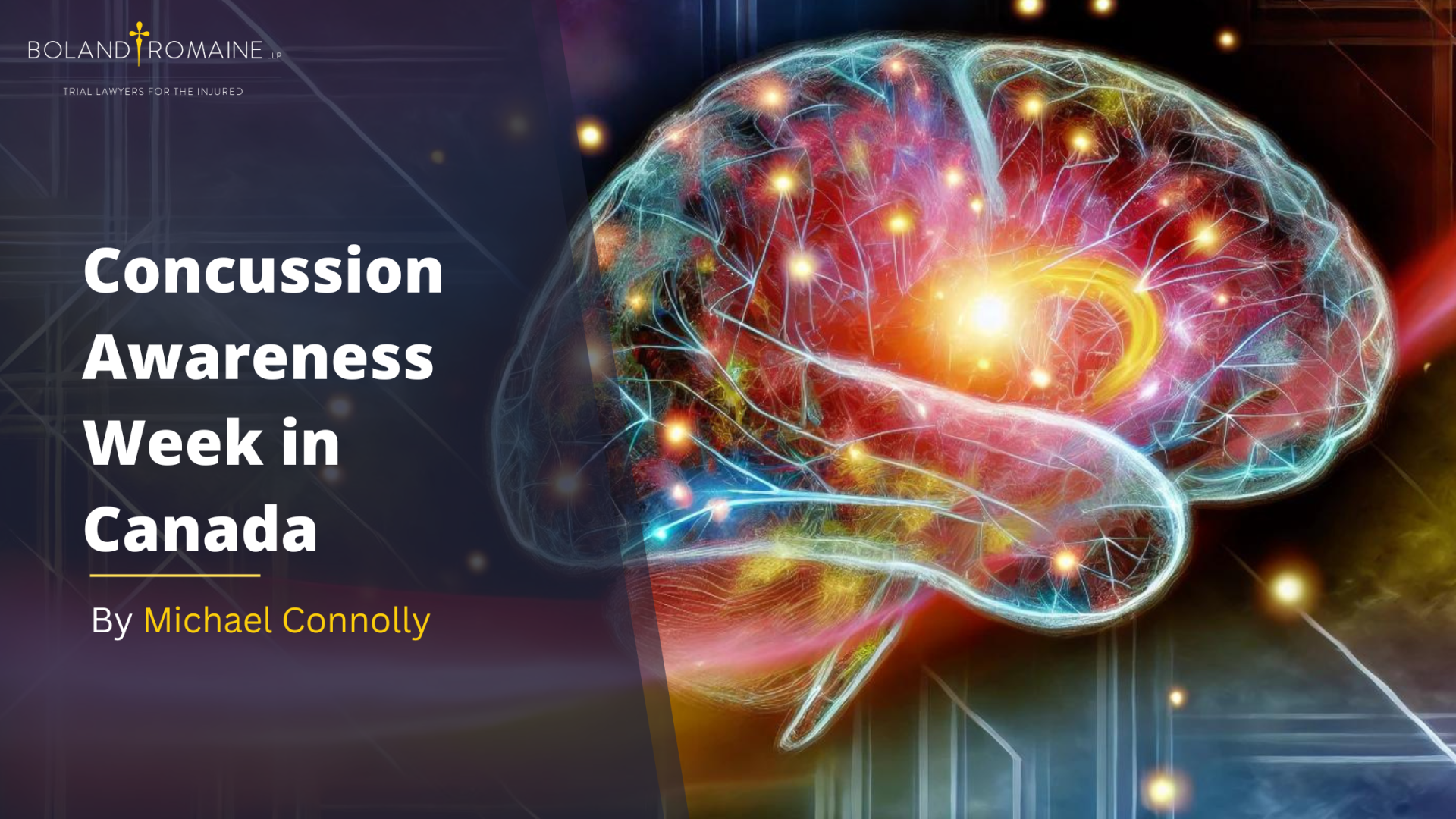Concussion Awareness Week in Canada
- 27.09.2024
- Uncategorized

Did you know that every year, thousands of Canadians are diagnosed with concussions, making it the most prevalent form of traumatic brain injury?
Many concussions, however, remain undetected or undiagnosed, putting Canadians at risk for long-term health consequences. These injuries can result from impacts to the head, neck, face, or body, leading to both immediate and lasting effects on brain health. It’s crucial that we all take steps to protect Canadians from these injuries and ensure that sports, recreation, and physical activities are as safe and inclusive as possible.
Read more on this here
Understanding Concussions: Causes, Symptoms, and Recovery
A concussion is a type of traumatic brain injury (TBI) caused by a blow or jolt to the head, neck, or body that causes the brain to move rapidly inside the skull. This sudden movement can lead to chemical changes in the brain and damage to brain cells, resulting in a range of physical, cognitive, and emotional symptoms. Concussions are considered a mild form of TBI, but their effects can be serious and long-lasting if not properly diagnosed and treated.
Causes of Concussions
Concussions can occur in various situations, but they are commonly associated with sports, falls, car accidents, and physical altercations. In sports, concussions are especially common in contact activities like football, hockey, soccer, and rugby, though they can also occur in non-contact sports. A concussion doesn’t always result from a direct hit to the head; a significant jolt to the body can also cause the brain to move inside the skull, leading to a concussion.
One of the challenges with concussions is that the injury is often "invisible" on standard imaging tests like CT scans or MRIs, making it difficult to detect without a proper medical evaluation. This can lead to concussions being undiagnosed or underreported, especially if symptoms are mild or delayed.
Symptoms of Concussions
Concussion symptoms can vary widely depending on the individual and the severity of the injury. Symptoms may appear immediately after the injury or take several hours or days to manifest. Common symptoms include:
- Headaches
- Dizziness or balance issues
- Nausea or vomiting
- Sensitivity to light or noise
- Confusion or difficulty concentrating
- Memory problems
- Fatigue or drowsiness
- Mood changes, such as irritability or depression
- Blurred or double vision
Some people may lose consciousness briefly, but this is not always the case with concussions. In fact, many people who suffer from concussions never lose consciousness, which is why it’s important to recognize the other signs of brain injury.
Diagnosing and Treating Concussions
If a concussion is suspected, it’s important to seek medical attention immediately. A healthcare professional will assess the symptoms and may perform neurological tests to check for issues with vision, balance, coordination, and memory. In some cases, imaging tests like a CT scan may be used to rule out more severe brain injuries, such as bleeding in the brain, but they are not typically used to diagnose concussions.
The primary treatment for a concussion is rest, both physically and mentally. This means avoiding strenuous physical activities, as well as limiting activities that require significant concentration or focus, such as reading, using a computer, or watching TV. Most people recover from a concussion within a few days to a couple of weeks, but recovery times can vary. In more severe cases, symptoms may last for months, a condition known as post-concussion syndrome.
It is essential to follow a gradual return-to-activity protocol under medical supervision to ensure full recovery. Returning to physical activities or sports too soon after a concussion increases the risk of a second, more serious brain injury, especially if the brain has not fully healed.
Preventing Concussions
While it is impossible to prevent all concussions, taking steps to reduce the risk is essential. Wearing appropriate safety gear, such as helmets, in activities where head injuries are common can significantly reduce the chances of sustaining a concussion. In sports, following proper techniques, rules, and guidelines for safe play, as well as ensuring athletes receive adequate training on how to avoid dangerous impacts, can also help lower the risk.
Awareness and education about concussion symptoms and risks are critical for everyone, from athletes and coaches to parents and school officials. Recognizing the signs of a concussion and seeking prompt treatment can make a significant difference in long-term recovery and overall brain health.
More resources:




